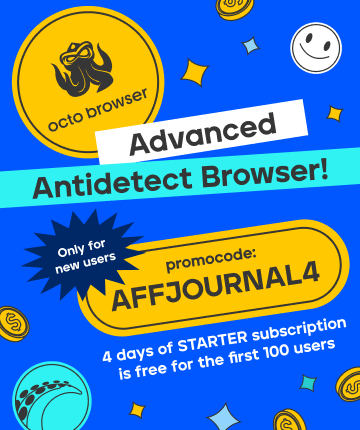

by Editor
Hello! Today, let's talk about hypotheses, their testing, and implementation. The need for hypotheses arises when a company is in turmoil, and implementing changes feels like navigating through a storm with everything on fire. We’ll discuss how to do this quickly and effectively using an example of one of the methods we employ in our daily work.
You can implement a hundred updates together, but still not understand specifically what caused the metrics to rise. Consequently, you may find yourself testing everything chaotically in the future. HADI cycles help avoid this and provide a clear understanding of how each hypothesis impacted the project.
The method is used in startups and product development, in marketing when the planning horizon is uncertain, and even for personal effectiveness. For example, to test how alternating between busy and relaxed work rhythms will impact your productivity.
What are HADI cycles?
HADI is a research method that includes four stages: hypothesis formulation (H), action (A), data collection (D), and insights (I). Therefore, it’s an acronym where each letter corresponds to one stage of the cycle.

It’s assumed that the cycle is infinite. So, after the company draws conclusions, it formulates a new hypothesis.
The hypothesis should adhere to the SMART format:
- S – specific. Instead of a vague “I want something”, it’s necessary to outline the final result of the goal with all the details. It’s crucial to clearly understand what should happen. What will we be testing?
- M – measurable. Use numbers or other precise data to make the goal measurable for evaluating the result (to understand how to verify the hypothesis confirmation).
- A – achievable. Set tasks that are within your capabilities. Don't set the bar too high.
- R – relevant. Ask yourself, “Why do I need this?” It might make sense to rephrase the goal or it may be unnecessary altogether. It's important to do something beyond confirming the hypothesis; otherwise, it looks very odd.
- T – time-bound. Set a deadline by which you plan to achieve the goal. This stimulates and prevents complacency. We need to understand how long we’ll be testing the hypothesis.
To learn more about how this works, keep reading.
Н – Hypothesis
First, it’s necessary to formulate the hypothesis correctly: if we do X, it’ll change Y. The hypothesis should be specific, measurable, achievable, relevant, and time-bound.
For example: you launch a new offer and choose auto-placements when starting advertising. After running for some time, you notice that leads primarily come from the Facebook feed, but the budget is spreading across other platforms. The coefficient decreases, but the cost per lead increases disproportionately.
Hypothesis: removing unnecessary placements and keeping only the Facebook feed will result in more targeted ad displays to our desired audience.
A – Action
Implementing the hypothesis: in our case, we completely remove unnecessary placements, leaving only the Facebook feed to specify ad display statistics for our target audience.
The main rule is not to test multiple hypotheses simultaneously that may affect the same metric. For example, if we leave the display not only on Facebook but also on Instagram, we’ll get confused about what is working and what is not. If we are testing, we should do it one at a time.
D – Data collection
We look at the results. If the hypothesis of keeping only Facebook yields results, then everything is fine, and we stick with it.
If something is wrong, and the result doesn't meet expectations or even worsens, we try displaying ads only on desktop or mobile devices. This is an even better option for us to specify the direction and work with it.
I – Insights
We analyze the numbers and determine whether the hypothesis has been confirmed. If so, it can be scaled – in the case of removing all placements, we can try removing Facebook and keeping something else, while scaling Facebook itself.
Here is an example of filling in a table during hypothesis testing in traffic arbitrage using the method described above.
|
HYPOTHESIS |
ACTION |
DATA (METRICS) |
EXPECTED EFFECT |
PROBABILITY OF THE EFFECT |
IMPLEMENTATION COMPLEXITY |
|
Specify advertising placements |
Remove unnecessary placements and keep only the Facebook feed |
CPL |
-30% |
50% |
1 |
If the hypothesis doesn't work, that's okay – it's time to test the next one. The principle of HADI cycles is suitable when you need to implement many different ideas and quickly discard ineffective ones.
Creating a stable income from traffic is a challenging process. This method (HADI) will help you select and test a successful combination, which will ultimately bring substantial profits.

by Editor



comments ....(0)
Leave a comment
You must be in to leave a comment